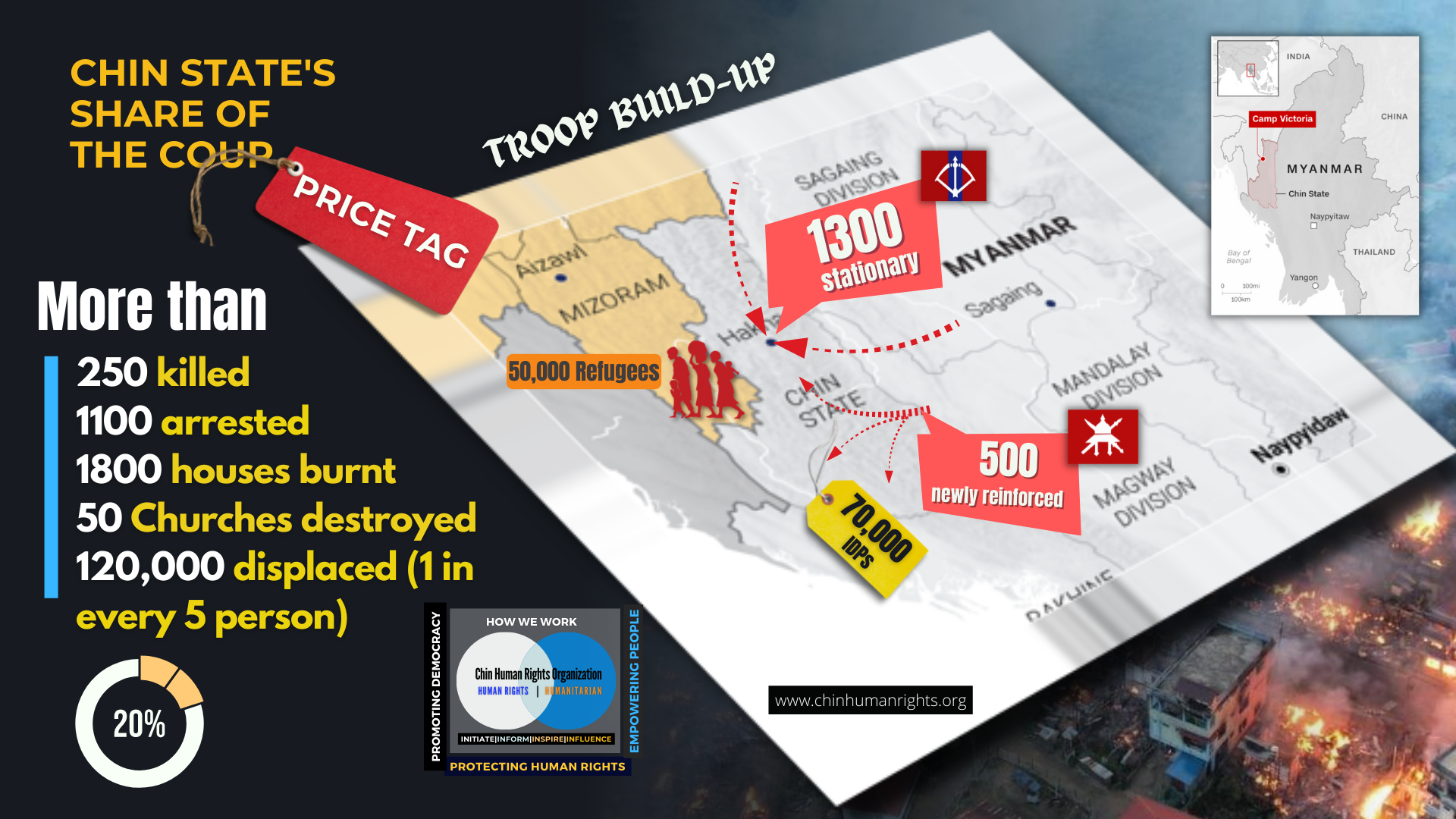
Chin Pastor Charged for “Inciting” Violence Against the State
Rev. En Khat Muan of Lawibual Baptist Church was arrested together with a local youth leader Lian Sian Mung on accusation that they abetted the resistance group PDF-Zoland in trying to persuade the public to boycott the state-run schools, which were re-opened by the miltiary junta in Tedim in northern Chin State.







